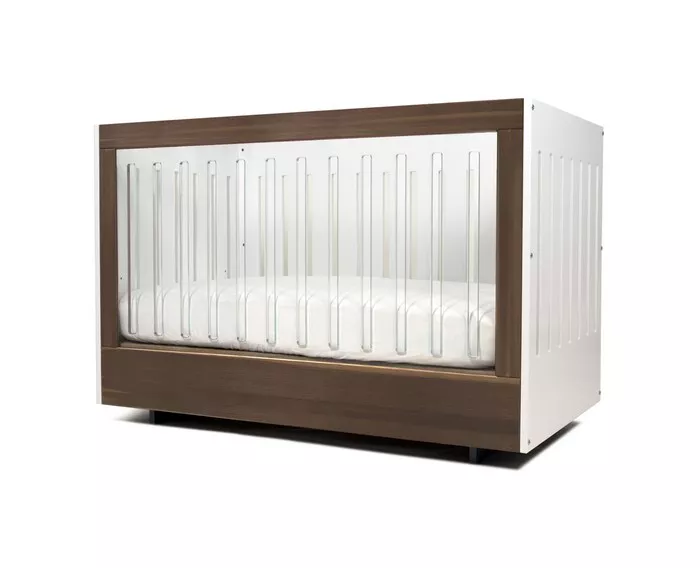In recent years, acrylic cribs have gained popularity in the baby furniture market, offering a modern and sleek alternative to traditional wooden cribs. However, as parents prioritize safety above all else when it comes to their little ones, questions inevitably arise regarding the safety of acrylic cribs. Are they as safe as their wooden counterparts? What are the potential risks and benefits associated with acrylic cribs? In this comprehensive article, we delve into the safety considerations surrounding acrylic cribs, examining factors such as material durability, environmental impact, and regulatory standards to provide parents with the information they need to make informed decisions.
Understanding Acrylic Cribs: Materials and Construction
Acrylic cribs are constructed using clear or tinted acrylic panels, providing a contemporary aesthetic that complements modern nursery designs. Unlike traditional wooden cribs, which are typically made from solid wood or wood composites, acrylic cribs feature transparent sides that offer visibility from all angles, allowing parents to keep an eye on their sleeping baby with ease.
The construction of acrylic cribs often involves sturdy metal or plastic hardware, ensuring stability and support for the mattress and bedding. While acrylic cribs may lack the warmth and natural feel of wooden cribs, they offer a minimalist look that appeals to many parents seeking a clean and modern nursery aesthetic.
Safety Considerations: Risks and Benefits
When it comes to safety, parents rightly have concerns about the materials used in their baby’s crib. Acrylic cribs present both potential risks and benefits that must be carefully weighed.
One of the primary concerns regarding acrylic cribs is the material’s durability and strength. While acrylic is known for its clarity and impact resistance, some parents worry about its long-term durability compared to traditional wooden cribs. Cracks, scratches, or damage to acrylic panels could compromise the crib’s structural integrity, posing a risk to the safety of the child.
However, proponents of acrylic cribs argue that when properly manufactured and maintained, acrylic cribs can be just as safe as wooden cribs, if not safer. Acrylic panels are often thicker and more robust than they appear, capable of withstanding everyday wear and tear without significant damage. Additionally, acrylic cribs may offer advantages in terms of hygiene, as the smooth, non-porous surface is easy to clean and disinfect, reducing the risk of bacteria buildup.
Another safety consideration is the potential for entrapment or suffocation. Acrylic cribs with slatted sides must adhere to strict spacing guidelines to prevent a baby’s head, limbs, or body from becoming trapped between the slats. Additionally, parents should ensure that the mattress fits snugly within the crib frame, with no gaps that could pose a suffocation hazard. Regular inspections of the crib and mattress are essential to identify any potential safety issues and address them promptly.
Regulatory Standards and Certifications
In the United States, cribs, including acrylic models, must meet stringent safety standards set forth by the Consumer Product Safety Commission (CPSC) to be legally sold and distributed. These standards encompass various criteria, including crib dimensions, mattress fit, slat spacing, and structural integrity, among others.
Acrylic crib manufacturers must undergo rigorous testing and certification processes to ensure their products meet or exceed these safety standards. Look for cribs that bear the Juvenile Products Manufacturers Association (JPMA) certification seal, indicating that they have been independently tested and verified for compliance with CPSC regulations.
Additionally, parents should be wary of purchasing acrylic cribs from unverified or uncertified sources, as these products may not meet the same safety standards as those from reputable manufacturers. Always purchase cribs from trusted retailers or directly from the manufacturer to mitigate the risk of purchasing substandard or unsafe products.
Environmental Impact: Sustainability and Eco-Friendliness
In an era increasingly focused on environmental sustainability, conscientious consumers may also consider the ecological impact of their purchasing decisions, including baby furniture such as cribs. Acrylic cribs, like many plastic-based products, raise concerns about their environmental footprint due to the production and disposal of petroleum-based plastics.
Wooden cribs, particularly those made from sustainably sourced materials such as FSC-certified wood, may offer a more eco-friendly alternative for environmentally conscious parents. Wood is a renewable resource that, when harvested responsibly, can be replenished through sustainable forestry practices.
However, it’s essential to recognize that acrylic cribs also have environmental benefits, albeit different from those of wooden cribs. Acrylic is highly durable and long-lasting, reducing the need for frequent replacement and minimizing waste. Additionally, acrylic cribs may be recyclable at the end of their lifespan, further reducing their environmental impact.
Ultimately, the choice between acrylic and wooden cribs may depend on individual preferences and priorities, including safety, aesthetics, and environmental concerns. By weighing the pros and cons of each option and considering factors such as material durability, regulatory standards, and environmental sustainability, parents can make informed decisions that prioritize the safety and well-being of their child while aligning with their values and preferences.


